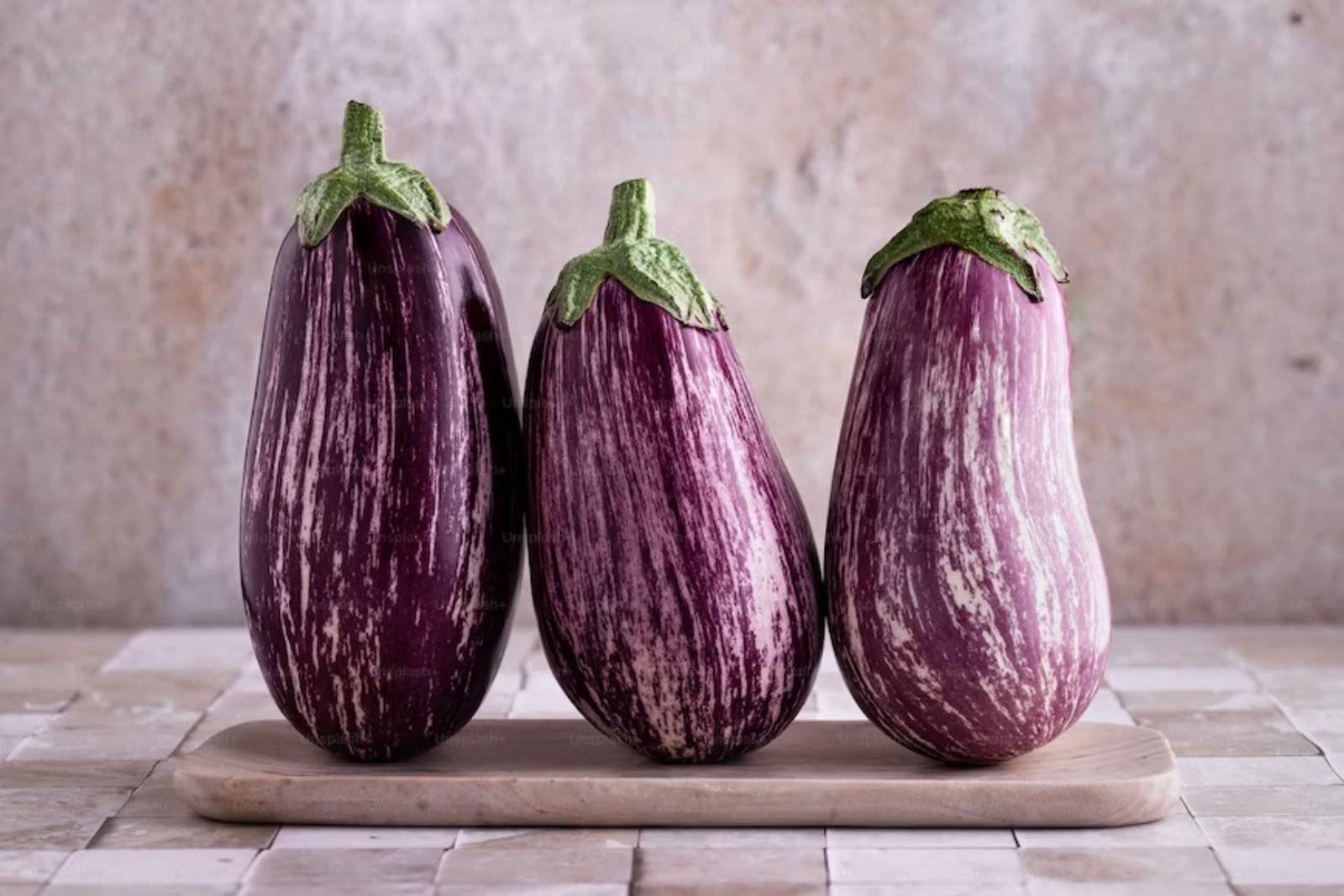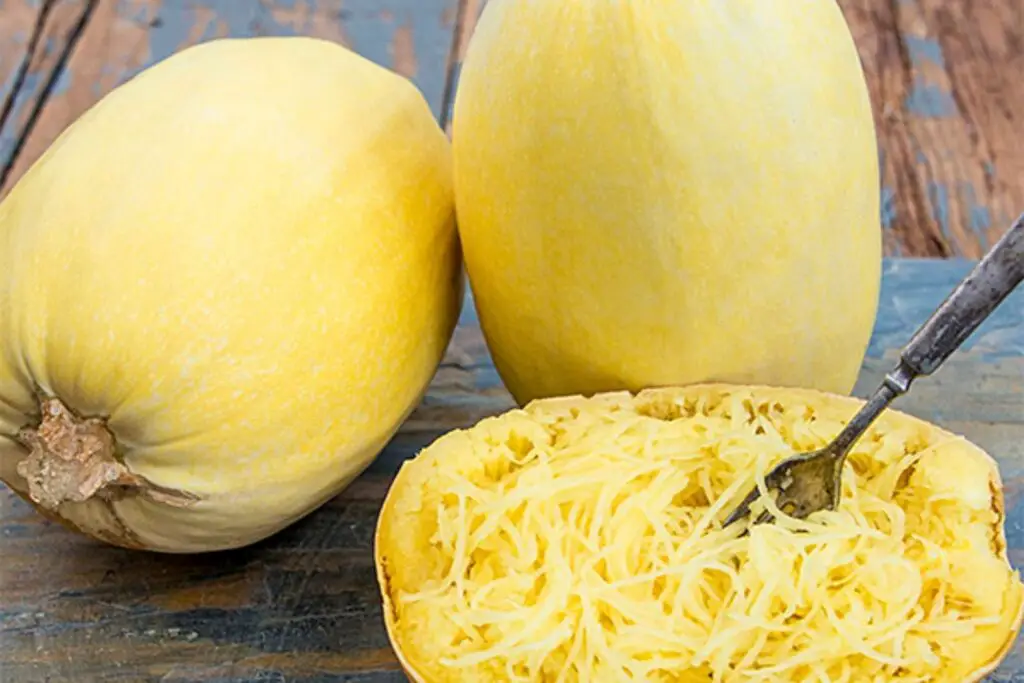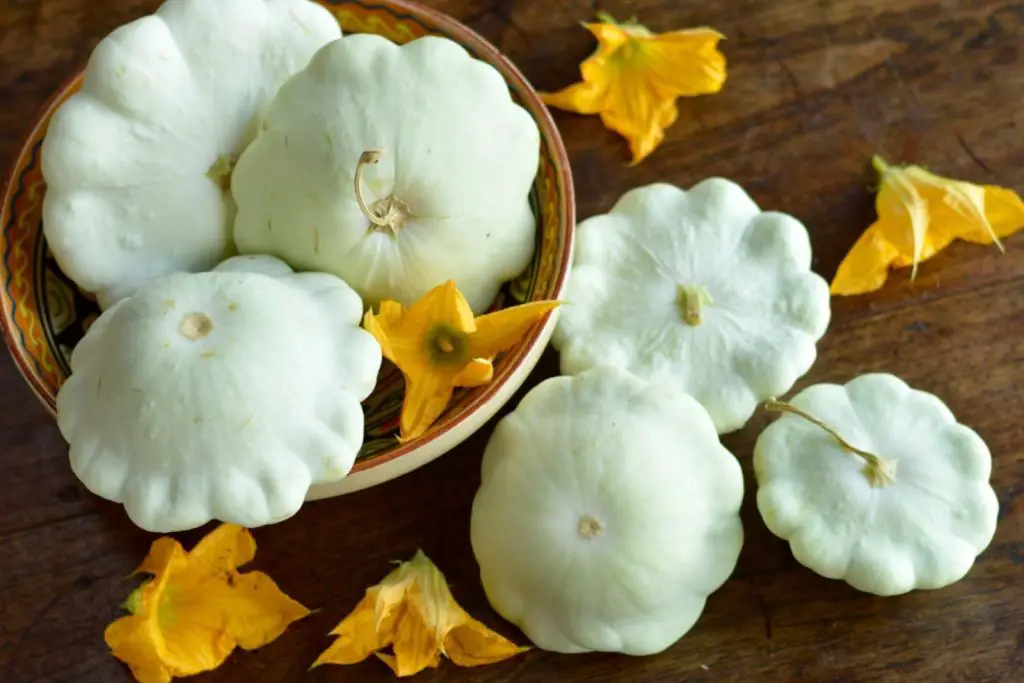
Aubergine, also known as eggplant, a versatile and flavorful vegetable that has been a staple in many cuisines around the globe. Aubergine is prized for its deep purple skin and creamy flesh, which offers a unique texture and a mild, earthy taste. Whether roasted, grilled, sautéed, or incorporated into various dishes, aubergine brings a delightful richness and depth to any recipe. If you find yourself with an abundance of aubergines or want to prolong their shelf life, freezing them is an excellent option. In this guide, we’ll delve into the art of freezing aubergine, providing you with valuable tips and techniques to preserve its quality, ensuring that you can enjoy the deliciousness of this versatile vegetable even beyond its peak season.
Here are the simple steps to freeze aubergine:
Step 1: Select and Prepare
When it comes to freezing aubergines, the first step is to choose fresh and firm ones. Look for aubergine with a smooth, shiny skin and without any blemishes or bruises. Freshness is key to ensuring good quality after freezing. Additionally, smaller-sized aubergines tend to freeze better than larger ones.
Once you have selected your aubergines, it’s important to give them a thorough wash under running water. This helps remove any dirt or residue that may be present on the skin. Gently rub the surface of the aubergines while rinsing to ensure they are clean.
After washing, it’s time to prepare the aubergines for freezing. Start by removing the stems. Simply grasp the stem and gently twist or cut it off. Removing the stem helps create a neater appearance and makes it easier to slice the aubergines later on.
Now, it’s time to slice the aubergines into your preferred shape or size. Common options include slicing them into rounds or cutting them into cubes. Choose a shape that suits your needs and the recipes you plan to use the frozen aubergines in. Slicing them into rounds is convenient for dishes like ratatouille or grilled aubergine, while cubed aubergine works well in stews or curries.
Take a sharp knife and carefully slice the aubergines into your desired thickness. Keep in mind that thicker slices may take longer to cook when using the frozen aubergines in recipes later on. Make the slices as uniform as possible for even cooking.
By selecting, washing, removing stems, and slicing the aubergines, you are ensuring that they are prepared and ready for the freezing process. Proper preparation helps maintain the quality and taste of the aubergines when they are later thawed and used in your favorite recipes.
Step 2: Blanch the Aubergine
Blanching is an important step in the freezing process as it helps maintain the quality and color of the aubergine. To begin, take a large pot and fill it with water. Bring the water to a rolling boil on your stovetop.
While the water is heating up, prepare an ice bath. Fill a bowl with cold water and add ice cubes to make it icy cold. This ice bath will be used to quickly cool down the aubergine after blanching.
Carefully place the aubergine slices or cubes into the boiling water. Allow them to cook for approximately four to five minutes. Blanching serves two purposes: it helps deactivate enzymes in the aubergine that could cause spoilage, and it also slightly softens the aubergine, making it easier to use in dishes after freezing.
Once the blanching time is up, promptly remove the aubergine from the boiling water using a slotted spoon or tongs. Immediately transfer the blanched aubergine to the ice bath. The ice bath halts the cooking process and rapidly cools down the aubergine, preserving its vibrant color and stopping it from becoming overcooked.
Leave the aubergine in the ice bath for a few minutes, until it has completely cooled. This ensures that the aubergine retains its texture and doesn’t become mushy. Once cooled, remove the aubergine from the ice bath and proceed to the next step of draining and drying before packaging it for freezing.
By blanching the aubergine before freezing, you take an essential step towards maintaining its quality, color, and texture. This simple technique helps preserve the flavors and nutrients of the aubergine, ensuring that it remains delicious and ready to be enjoyed in your favorite recipes, even after being frozen.
Step 3: Drain and Dry
Once the aubergine slices or cubes have been cooled in the ice bath, it’s important to drain and dry them properly before freezing. This step helps prevent the formation of ice crystals, which can degrade the quality of the aubergine during freezing.
To begin, place a colander or strainer in your sink or over a large bowl. Carefully transfer the blanched aubergine from the ice bath to the colander or strainer, allowing any excess water to drain away. Give the colander a gentle shake to help remove as much water as possible.
Next, it’s important to pat the aubergine dry using a clean kitchen towel or paper towels. Lay out a clean kitchen towel on a flat surface or place a few layers of paper towels on a tray. Arrange the drained aubergine slices or cubes on the towel or paper towels, making sure they are in a single layer.
Gently press another kitchen towel or more paper towels on top of the aubergine to absorb any remaining moisture. Gently pat the aubergine to dry them thoroughly. Take your time with this process to ensure that the aubergine is as dry as possible before freezing.
By ensuring that the aubergine is properly drained and dried, you minimize the risk of ice crystals forming during the freezing process. This step helps maintain the texture and quality of the aubergine, ensuring that it remains in good condition when it comes time to thaw and use it in your favorite recipes.
Step 4: Pack to Freeze
Proper packaging is crucial when it comes to preserving the flavor, texture, and overall quality of frozen aubergine. You have a few options for packaging:
Let’s explore the packaging process for each option:
Freezer Bags:
If you choose to use freezer bags, ensure they are made specifically for freezer storage. These bags are designed to be durable and resistant to moisture and freezer burn. Before filling the bags, remove as much air as possible to minimize the risk of freezer burn. One effective method is to use a straw to suck out the excess air before sealing the bag tightly. Alternatively, you can press the bag gently to squeeze out the air while sealing it. Once sealed, flatten the bags to create a uniform thickness, which will help with efficient freezing and storage. It’s also important to label the bags with the date of freezing, as this allows you to keep track of their freshness.
Airtight Containers:
Using airtight containers is another excellent option for packaging frozen aubergine. Choose containers that are suitable for freezer storage and have a tight seal to prevent air and moisture from entering. When filling the containers, leave a small headspace to allow for expansion as the aubergine freezes. This extra space prevents the container from cracking under pressure. Ensure that the lid is securely fastened to maintain an airtight environment. As with freezer bags, it’s essential to label the containers with the date of freezing.
Vacuum-Sealed Bags:
Vacuum-sealing is a popular method for packaging food for long-term freezer storage. This technique removes air from the bags, creating a tightly sealed package that helps prevent freezer burn. If you have a vacuum sealer, follow the manufacturer’s instructions to vacuum-seal the aubergine slices or cubes. Ensure that the bags are properly sealed to maintain the vacuum. Similar to other packaging methods, labeling the vacuum-sealed bags with the freezing date is necessary for easy identification.
By choosing the appropriate packaging method and ensuring airtight seals, you create an optimal environment for freezing aubergine. Proper packaging helps maintain the flavor, texture, and overall quality of the frozen aubergine, allowing you to enjoy its deliciousness even after an extended period of storage. Remember to label the packages with the freezing date for easy organization and rotation of your frozen aubergine supply.
Step 5: Freeze and Store in the Freezer
After properly packaging the aubergine, it’s time to place it in the freezer for long-term storage. Here’s how to do it effectively:
- Arrange in a Single Layer: Place the packaged aubergine in the freezer, making sure they are arranged in a single layer. This allows for even freezing and helps maintain the individual shape of the slices or cubes.
- Use Parchment Paper: If you have a large amount of aubergine or multiple packages, it’s a good idea to separate them with parchment paper. This prevents the aubergine from sticking together as they freeze. Simply place a sheet of parchment paper between the layers of aubergine to create a barrier.
- Allow Complete Freezing: Leave the aubergine in the freezer until it is completely frozen. The freezing time can vary depending on the thickness of the slices or cubes, but it typically takes about two to three hours. Thicker pieces may require more time. Freezing the aubergine thoroughly ensures that it retains its quality and texture during storage.
- Stack Packages (Optional): Once the aubergine is completely frozen, you have the option to stack the packages to save space in the freezer. Ensure that the packages are secure and won’t topple over. If stacking, it’s helpful to label each package with the contents and date of freezing for easy identification.
By arranging the eggplant in a single layer, using parchment paper to separate layers if needed, and allowing complete freezing, you set the stage for optimal storage. Proper freezing ensures that the aubergine maintains its flavor, texture, and overall quality until you’re ready to use it in your favorite recipes. Remember to label the packages for easy organization and to maintain a rotation system, using the oldest packages first.
How long can aubergine last in the freezer?
Aubergine can last in the freezer for approximately 8 to 10 months when stored properly. It is important to package the aubergine tightly to prevent freezer burn and maintain its quality. Freezing extends the shelf life of aubergine, allowing it to be enjoyed in various dishes even after several months of storage.
Step 6: Thaw the Frozen Aubergine
When you’re ready to enjoy the frozen eggplant, follow these steps for proper thawing and usage:
- Retrieve from the Freezer: Remove the desired amount of frozen eggplant from the freezer. Take out the package or container that contains the portion you wish to thaw and use.
- Thaw in the Refrigerator: Transfer the frozen aubergine to the refrigerator to thaw. Thawing in the refrigerator is the recommended method as it allows for a gradual thawing process. Place the package or container on a plate or in a shallow dish to catch any potential drips or condensation. Thawing in the refrigerator overnight is usually sufficient to thaw the aubergine completely. However, if you have larger or thicker pieces, it may require additional time.
- Avoid Room Temperature Thawing: It’s important to avoid thawing the aubergine at room temperature, as this can lead to mushiness and a loss of texture. Thawing at room temperature can also create a favorable environment for bacterial growth. Therefore, it’s best to stick with refrigerator thawing to maintain the quality of the aubergine.
- Incorporate into Dishes: Once the aubergine is completely thawed, it is ready to be incorporated into your desired dishes. The thawed aubergine can be used in various recipes, such as stir-fries, stews, casseroles, or even as a side dish. The thawed aubergine will have a similar texture and flavor to fresh aubergine, allowing you to enjoy its versatility and taste.
By thawing the frozen aubergine gradually in the refrigerator and incorporating it into your favorite dishes, you can enjoy the convenience of having eggplant available year-round, while still savoring its delicious flavor and texture.
Other related questions
Can you refreeze aubergine?
It is generally safe to refreeze aubergine if it has been thawed properly and handled safely. However, the texture and quality may be compromised after multiple freeze-thaw cycles. It is recommended to use the thawed aubergine within a reasonable time frame or portion it out before refreezing to minimize the risk of degradation.
How do I know if the aubergine has gone bad after being frozen?
To determine if a frozen aubergine has gone bad, examine its physical characteristics and smell. Look for any signs of freezer burn, such as dry or discolored patches on the skin. If the aubergine appears mushy, slimy, or has an off-putting odor, it may have spoiled and should be discarded. Trust your senses and prioritize food safety when assessing the quality of frozen aubergine.
Can you freeze aubergine that has been roasted or grilled?
Yes, you can freeze aubergine that has been roasted or grilled. However, the texture of the aubergine may change slightly upon freezing and thawing, resulting in a softer consistency. It is recommended to cool the roasted or grilled aubergine before freezing and store it in an airtight container or freezer bag. When thawed, the aubergine can be used in dishes like dips, spreads, or as an ingredient in cooked recipes like curries or pasta dishes.
Can frozen aubergine be used in dips or spreads?
Yes, frozen aubergine can be used in dips or spreads. Thawed aubergine tends to have a softer texture, which makes it suitable for mashing or blending into dips and spreads. It can be used as an ingredient in popular dips like baba ganoush or as a base for spreads to be enjoyed on bread or crackers. Adding herbs, spices, and other ingredients can enhance the flavor of the dips or spreads made with frozen aubergine.
Should you salt aubergine before freezing to remove bitterness?
Salting aubergine before freezing is not necessary to remove bitterness. The bitterness in aubergine can be reduced by a process called “degorging,” which involves salting and draining the sliced or cubed aubergine. However, this step is typically done before cooking and not specifically for freezing. Freezing aubergine without salting can still yield good results, especially if the aubergine is going to be used in cooked dishes where any residual bitterness will likely be masked by other flavors.








